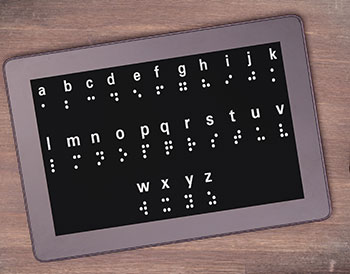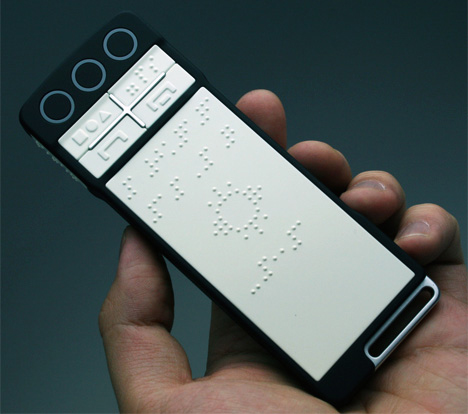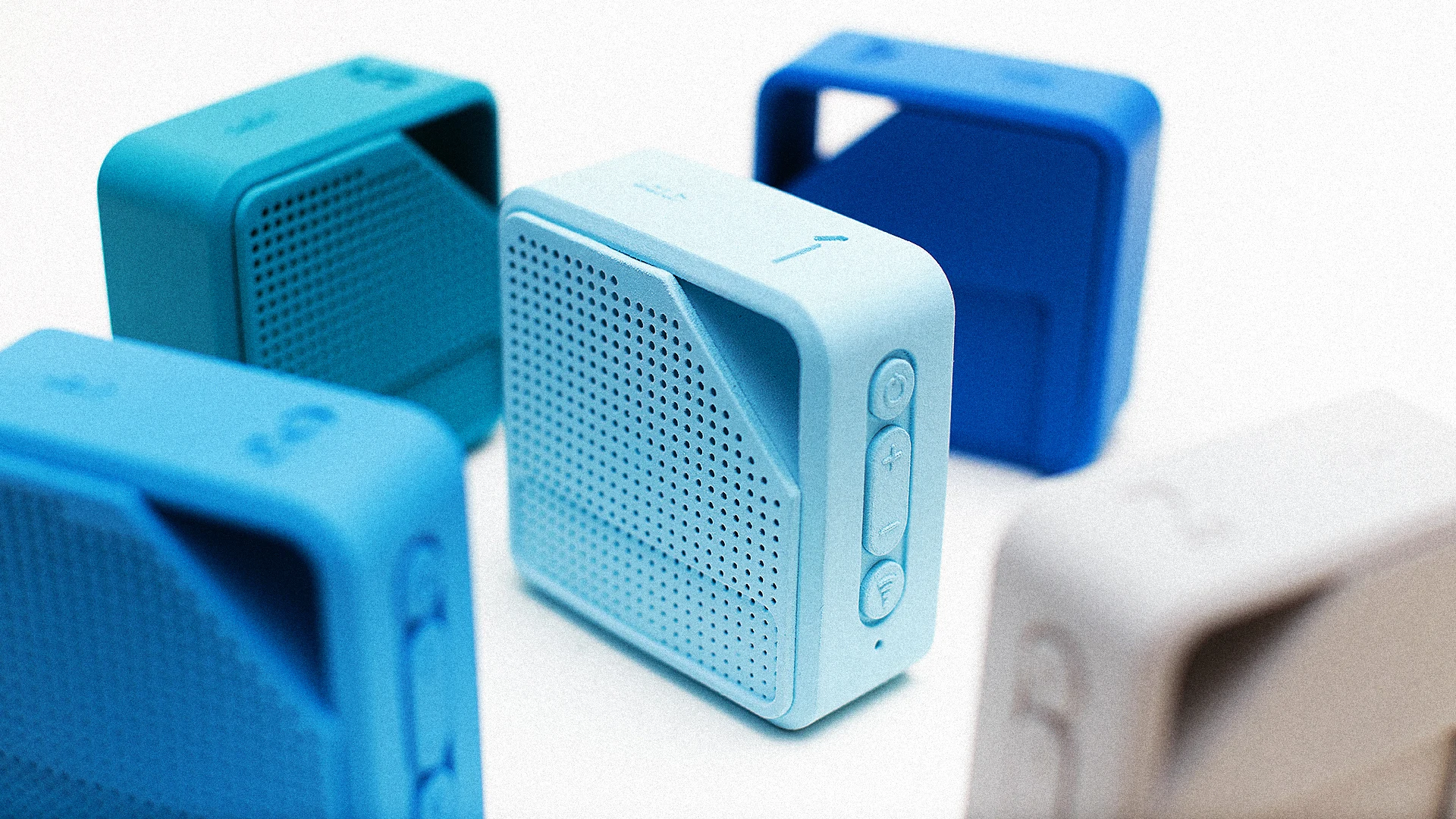Mobility Aids for Visually Impaired Users: Improving Independence
Mobility Aids for Visually Impaired Users: Improving Independence
Blog Article
Discover Cutting-edge Devices Developed for the Aesthetically Damaged
The development of ingenious devices for the aesthetically damaged represents a considerable innovation in accessibility and self-reliance. Technologies such as clever glasses with AI capabilities and mobile applications developed to supply acoustic summaries are reshaping daily experiences for individuals. Furthermore, wearable tools that use haptic feedback enhance environmental understanding, while contemporary Braille advancements supply brand-new ways to engage with text. As these tools remain to evolve, their impact on the lives of those with visual disabilities increases crucial concerns regarding the future of inclusivity and freedom in different elements of life. What lies ahead in this technological landscape?
Smart Glasses for Navigation

Smart glasses developed for navigating are revolutionizing the method visually damaged people interact with their atmosphere. These innovative devices use a mix of video camera modern technology, expert system, and acoustic responses to provide real-time information regarding surroundings. By utilizing challenge detection systems, smart glasses can signal customers to potential hazards, enabling safer wheelchair in both acquainted and unfamiliar setups.
The assimilation of GPS technology additionally improves navigating abilities, enabling individuals to get auditory directions as they move. This hands-free approach not just cultivates freedom but also encourages aesthetically damaged individuals to navigate city landscapes with increased confidence. In addition, several clever glasses are furnished with functions that identify landmarks and road indicators, supplying contextual info that enhances the customer experience.
In addition, the advancement of these gadgets is constantly advancing, with firms functioning to improve the precision of item recognition and increase the variety of navigational functions. As smart glasses come to be a lot more budget friendly and available, they hold the potential to considerably transform life for visually damaged users. Eventually, these ingenious devices represent a critical action toward inclusivity, offering improved flexibility and a greater feeling of autonomy for people browsing the world around them.

Mobile Apps for Daily Living
How can mobile applications boost the every day lives of aesthetically impaired people? Mobile applications are changing the method visually damaged customers navigate their environments, take care of day-to-day jobs, and gain access to information. These applications give crucial assistance through numerous functionalities, fostering freedom and enhancing lifestyle.
Numerous ingenious mobile apps are made particularly for everyday living. For instance, applications like Be My Eyes link visually impaired users with sighted volunteers by means of video phone calls, permitting them to obtain real-time help with tasks such as reviewing tags or browsing unfamiliar spaces. In A Similar Way, Seeing AI, established by Microsoft, makes use of expert system to describe environments, reviewed text, and identify things, efficiently changing a smartphone into an effective device for daily help.
Furthermore, navigating applications tailored for the visually impaired, such as Aira and BlindSquare, use audio-based instructions and ecological info, making it possible for customers to traverse their surroundings safely and confidently. Beyond navigation and instant help, mobile apps also support organization and task administration, with functions that assist customers establish suggestions, create order of business, and track visits. In recap, mobile applications act as crucial sources, encouraging aesthetically damaged people to lead more independent and satisfying lives.
Wearable Technologies for Help
Empowerment with innovation is progressively obvious in the realm of wearable devices developed to assist visually damaged people. These ingenious tools integrate perfectly into every day life, boosting navigating and supplying necessary comments to users. Smart glasses equipped with electronic cameras can acknowledge faces and read text out loud, enabling users to connect more with confidence in social and expert setups.
One more remarkable improvement is using haptic responses systems in wearable gadgets. These systems make use of vibrations or various other tactile signals to share info about the individual's environment, such as challenges or changes in terrain, boosting wheelchair and safety. Wearable innovations additionally include wristbands that attach to smartphones, signaling users to notices through subtle OCR devices for the blind resonances, thus improving connection without reliance on visual signs.
As these technologies proceed to evolve, they are not only enhancing independence for visually damaged people but likewise cultivating a better sense of addition in culture. By linking the gap between obstacles encountered in daily living and the capacity for freedom, wearable modern technologies function as critical devices in the pursuit for equality and empowerment for those with visual disabilities.
Sound Summary Devices
Sound summary tools play an important duty in boosting accessibility for visually impaired people, supplying them with the ability to engage with visual media. Wearable technology for low vision. These devices use narrated summaries of crucial aesthetic elements in films, television programs, and live efficiencies, ensuring that customers can totally understand the context and feelings shared with visuals
Sound description can be integrated into various systems, consisting of streaming solutions, cinema screenings, and live theater. Many preferred streaming solutions currently include audio description as an ease of access feature, allowing visitors to pick it quickly. In addition to mainstream media, specialized apps additionally exist, offering audio descriptions for art exhibitions, galleries, and various other cultural events.
The performance of audio description pivots on the skill of the storytellers, that should convey aesthetic details succinctly without diminishing the original audio. Innovations in this area are likewise leading the way for more personalized experiences, where customers can change the level of information and pacing according to their preferences.
Braille Innovations and Gadgets
Braille devices and developments have considerably transformed the method visually impaired individuals interact with text and details. Modern advancements have actually led to the growth of functional devices that boost proficiency and self-reliance among users. Notably, Braille display modern technologies have actually advanced, enabling dynamic reading experiences. These devices transform electronic text into Braille, enabling customers to access a substantial variety of info on smart devices, tablet computers, and computers.
In addition, mobile Braille notetakers combine conventional Braille input with modern-day capabilities, facilitating note-taking, organizing, and record modifying on the move. Voice-activated assistive devices. These compact gadgets often feature text-to-speech capacities, bridging the space in between Braille and auditory info
In enhancement, innovative Braille printers have arised, permitting users to create Braille tags, records, and educational materials successfully. This accessibility promotes higher engagement in professional and educational atmospheres, inevitably advertising inclusivity.
Furthermore, research into wise Braille modern technologies proceeds to expand. Devices that integrate expert system are being discovered to give real-time navigating assistance and contextual information, enhancing the user experience in diverse settings. In general, these developments show a commitment to equipping visually impaired individuals through technology, ensuring they can easily access and engage with the globe around them.

Conclusion
The innovation of innovative tools for the aesthetically damaged considerably improves freedom and lifestyle. Smart glasses, mobile applications, wearable innovations, audio summary devices, and Braille developments collectively encourage people by providing vital navigating aid, environmental awareness, and enhanced analysis experiences. These modern technologies not just foster greater inclusion however likewise advertise freedom in day-to-day tasks, inevitably contributing to an extra easily accessible and equitable culture for aesthetically damaged people. Continued development in this field holds guarantee for additional enhancements.
As clever glasses come to be a lot more easily accessible and cost effective, they hold the prospective to significantly transform daily life for visually damaged individuals. Mobile applications are reinventing the way visually damaged users browse their settings, handle daily jobs, and gain access to information. Applications like Be My Eyes link visually damaged users with sighted volunteers via video clip calls, permitting them to get real-time support with tasks such as reviewing labels or browsing unknown rooms.Furthermore, navigation applications tailored for the aesthetically impaired, such as Aira and BlindSquare, use audio-based directions and ecological information, making it possible for users to traverse their surroundings securely and confidently.The innovation of ingenious devices for the visually damaged significantly improves independence and high quality of life.
Report this page